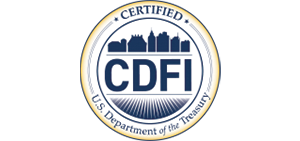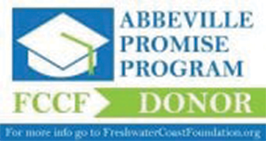Loan terminology can be confusing. To help you understand the process and empower you to make better financial decisions we’ve created this glossary of loan definitions. Knowing these terms will help you understand small your loan options and the obligations that come with them.
- A
- B
- C
- D
- F
- G
- I
- L
- O
- P
- R
- T
- U
Annual percentage rate or APR is a calculation used in loans to enable the borrower to compare how much credit actually costs. For example, you could compare the APR on two credit cards. This gives you a better comparison of the cost of credit. Don’t confuse APR with simple interest rate. Interest rate refers only to the interest you pay on the money you’ve borrowed. However, APR includes other fees over and above interest. These fees could include origination fees, check processing and maintenance fees.
Amortization is the allocation of payments to pay off a loan within the stated repayment period. Amortization schedules apply most of the money in early payments towards paying down the interest. Later, larger potions of each payment go to repay the principal.
A balloon payment is a lump sum payment due at the end of a loan term. A balloon payment implies that monthly payments are not enough to pay off the loan in full, but instead a lump sum will be due. Loans with balloon payments are typically short-term loans that keep loan payments low until the term is due.
A balloon payment is a lump sum payment due at the end of a loan term. A balloon payment implies that monthly payments are not enough to pay off the loan in full, but instead a lump sum will be due. Loans with balloon payments are typically short-term loans that keep loan payments low until the term is due.
A co-signer is any third party responsible for loan repayment along with you. A business cosigner is sometimes called a guarantor. The co-signer, or guarantor, must sign a document guaranteeing to make payments if you default and cannot pay. A person with good credit usually does not need a cosigner. However, a younger person with little or no credit may be required to have one, and should line up potential co-signers such as an established family member. (call out box) Did you know HopeSouth offers a special First Time Buyer auto loan product?
A credit report details the credit history of a borrower or applicant and includes a credit score issued by recognized credit bureaus. Credit reports detail the creditworthiness of a person or business and help lenders decide whether to approve credit and at what terms. At HopeSouth, we look beyond the credit score to help make decisions based on an individuals personal story and not just a number.
Debt-to-income ratio refers to the percentage of income an individual uses to pay debt. Lenders use this percentage to decide whether a borrower can afford another loan. You may have a student loan and other significant debts. A high debt to income ratio may raise questions about whether a person can afford additional monthly payments.
Fair market value refers to the property value, i.e., the purchase price of real estate, a vehicle or other collateral a buyer would be willing to pay on the open market. The fair market value is calculated by looking at factors like the value of similar property or assets. A mortgage lender will order a property appraisal to determine whether there is sufficient collateral to justify a loan, when collateral is required.
Gross income is the total earnings of an individual or business before taxes or costs are subtracted. For individuals, gross income equals your total earnings minus taxes and mandatory deductions. For businesses, gross income refers to revenue over and above payroll, taxes, debt obligations and any other costs associated with operating the business. Net income, by contrast, is after certain costs are subtracted.
Interest payments refer specifically to the part of the borrower’s monthly payment that goes to pay down interest. Interest payments differ from the part of the payment amounts that go to pay down principal. Interest payments may differ because of amortization. They may be higher at the beginning of a loan but lower near the end.
A credit line or line of credit is revolving credit that a borrower can borrow from as needed, up to an approved maximum limit. The borrower only withdraws sums as needed, and will be charged interest only on such amounts, not on the maximum approved limit. A loan is different from a line of credit because it requires you to take out the full loan amount at the beginning. With a loan you must pay interest on the full loan funds until fully repaid.
Not all costs associated with a loan are part of the principal or interest. An origination fee is the money the lender charges you to cover the costs of managing your loan.
The prime rate is also called the prime loan rate. The prime rate usually refers to a rate published by the Wall Street Journal. Prime rate is used as part of a formula for setting various loan rates. For example, you may see a small loan’s rate quoted as “prime + 3.5%.” This means that the interest rate starts with the prime rate and tacks another 3.5%. If prime is 3.25% and you add 3.5%, it means the rate charged will be 6.75% in this example.
Principal is the amount of money the borrower borrows. Interest is the amount the lender charges on the loan balance. Principal and interest or P&I usually refers to the monthly payment amount including a portion for principal repayment and a portion for interest.
A promissory note is a document you sign agreeing to repay money you borrow. The terms of the promissory note set out the loan principal, monthly payments, repayment period, interest rate and other terms. The promissory note is part of the loan documents, which may include separate covenants, mortgages, UCC filings and more. The lender prepares the promissory note, and usually it is a standard form document. Wording of the note is not usually negotiated.
Repayment Period
The repayment period is the time it takes to make all payments due on a loan. The repayment schedule begins with the first payment on the loan and ends when the loan is finally paid off or a balloon payment is due. Another way to describe the end of the repayment period is to say the loan has reached its maturity.
Title Insurance
Title insurance is an insurance policy guaranteeing the title to real estate is clear. A title report protects again liens and claims against real property. An owner’s policy protects the property owner and is part of purchase transactions. A lender’s policy protects the lender in a real property loan transaction. A title company conducts a title search checking unpaid property taxes, liens and other details in the property’s history. A title insurance company writes the policy charging insurance premiums. The lender make title insurance mandatory in any commercial real estate transaction.
Unsecured Loan
This is a loan based on your personal creditworthiness. The benefit is you don’t need collateral such as a car, home, or other assets. However, you may see a higher interest rate because the loan is a bigger risk for credit unions and other lenders to make.




